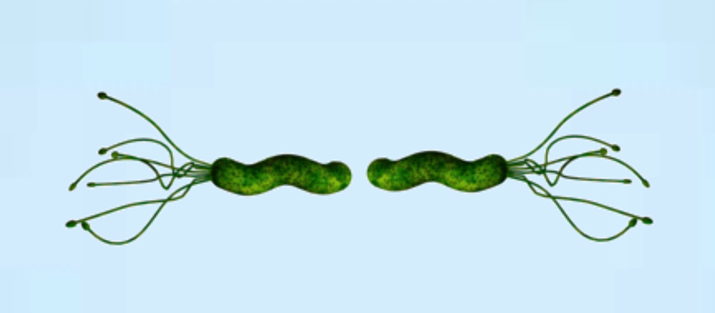[1]
Ceylan A, Kirimi E, Tuncer O, Türkdoğan K, Ariyuca S, Ceylan N. Prevalence of Helicobacter pylori in children and their family members in a district in Turkey. Journal of health, population, and nutrition. 2007 Dec:25(4):422-7
[PubMed PMID: 18402185]
[2]
Hooi JKY, Lai WY, Ng WK, Suen MMY, Underwood FE, Tanyingoh D, Malfertheiner P, Graham DY, Wong VWS, Wu JCY, Chan FKL, Sung JJY, Kaplan GG, Ng SC. Global Prevalence of Helicobacter pylori Infection: Systematic Review and Meta-Analysis. Gastroenterology. 2017 Aug:153(2):420-429. doi: 10.1053/j.gastro.2017.04.022. Epub 2017 Apr 27
[PubMed PMID: 28456631]
Level 1 (high-level) evidence
[3]
Graham DY, Adam E, Reddy GT, Agarwal JP, Agarwal R, Evans DJ Jr, Malaty HM, Evans DG. Seroepidemiology of Helicobacter pylori infection in India. Comparison of developing and developed countries. Digestive diseases and sciences. 1991 Aug:36(8):1084-8
[PubMed PMID: 1864201]
[4]
Iannone A, Giorgio F, Russo F, Riezzo G, Girardi B, Pricci M, Palmer SC, Barone M, Principi M, Strippoli GF, Di Leo A, Ierardi E. New fecal test for non-invasive Helicobacter pylori detection: A diagnostic accuracy study. World journal of gastroenterology. 2018 Jul 21:24(27):3021-3029. doi: 10.3748/wjg.v24.i27.3021. Epub
[PubMed PMID: 30038469]
[5]
Jones NL, Koletzko S, Goodman K, Bontems P, Cadranel S, Casswall T, Czinn S, Gold BD, Guarner J, Elitsur Y, Homan M, Kalach N, Kori M, Madrazo A, Megraud F, Papadopoulou A, Rowland M, ESPGHAN, NASPGHAN. Joint ESPGHAN/NASPGHAN Guidelines for the Management of Helicobacter pylori in Children and Adolescents (Update 2016). Journal of pediatric gastroenterology and nutrition. 2017 Jun:64(6):991-1003. doi: 10.1097/MPG.0000000000001594. Epub
[PubMed PMID: 28541262]
[6]
Jones NL, Sherman PM. Helicobacter pylori infection in children. Current opinion in pediatrics. 1998 Feb:10(1):19-23
[PubMed PMID: 9529633]
Level 3 (low-level) evidence
[7]
Zeng M, Mao XH, Li JX, Tong WD, Wang B, Zhang YJ, Guo G, Zhao ZJ, Li L, Wu DL, Lu DS, Tan ZM, Liang HY, Wu C, Li DH, Luo P, Zeng H, Zhang WJ, Zhang JY, Guo BT, Zhu FC, Zou QM. Efficacy, safety, and immunogenicity of an oral recombinant Helicobacter pylori vaccine in children in China: a randomised, double-blind, placebo-controlled, phase 3 trial. Lancet (London, England). 2015 Oct 10:386(10002):1457-64. doi: 10.1016/S0140-6736(15)60310-5. Epub 2015 Jun 30
[PubMed PMID: 26142048]
Level 1 (high-level) evidence
[8]
Zamani M, Vahedi A, Maghdouri Z, Shokri-Shirvani J. Role of food in environmental transmission of Helicobacter pylori. Caspian journal of internal medicine. 2017 Summer:8(3):146-152. doi: 10.22088/cjim.8.3.146. Epub
[PubMed PMID: 28932364]
[9]
Diaconu S, Predescu A, Moldoveanu A, Pop CS, Fierbințeanu-Braticevici C. Helicobacter pylori infection: old and new. Journal of medicine and life. 2017 Apr-Jun:10(2):112-117
[PubMed PMID: 28616085]
[10]
Kao CY, Sheu BS, Wu JJ. Helicobacter pylori infection: An overview of bacterial virulence factors and pathogenesis. Biomedical journal. 2016 Feb:39(1):14-23. doi: 10.1016/j.bj.2015.06.002. Epub 2016 Apr 1
[PubMed PMID: 27105595]
Level 3 (low-level) evidence
[11]
Lee JY, Kim N. Diagnosis of Helicobacter pylori by invasive test: histology. Annals of translational medicine. 2015 Jan:3(1):10. doi: 10.3978/j.issn.2305-5839.2014.11.03. Epub
[PubMed PMID: 25705642]
[12]
Ashton-Key M, Diss TC, Isaacson PG. Detection of Helicobacter pylori in gastric biopsy and resection specimens. Journal of clinical pathology. 1996 Feb:49(2):107-11
[PubMed PMID: 8655673]
[13]
Rajindrajith S, Devanarayana NM, de Silva HJ. Helicobacter pylori infection in children. Saudi journal of gastroenterology : official journal of the Saudi Gastroenterology Association. 2009 Apr:15(2):86-94. doi: 10.4103/1319-3767.48964. Epub
[PubMed PMID: 19568571]
[14]
Fischbach W, Malfertheiner P. Helicobacter Pylori Infection. Deutsches Arzteblatt international. 2018 Jun 22:115(25):429-436. doi: 10.3238/arztebl.2018.0429. Epub
[PubMed PMID: 29999489]
[15]
Koletzko S, Jones NL, Goodman KJ, Gold B, Rowland M, Cadranel S, Chong S, Colletti RB, Casswall T, Elitsur Y, Guarner J, Kalach N, Madrazo A, Megraud F, Oderda G, H pylori Working Groups of ESPGHAN and NASPGHAN. Evidence-based guidelines from ESPGHAN and NASPGHAN for Helicobacter pylori infection in children. Journal of pediatric gastroenterology and nutrition. 2011 Aug:53(2):230-43. doi: 10.1097/MPG.0b013e3182227e90. Epub
[PubMed PMID: 21558964]
Level 1 (high-level) evidence
[16]
Mégraud F. H pylori antibiotic resistance: prevalence, importance, and advances in testing. Gut. 2004 Sep:53(9):1374-84
[PubMed PMID: 15306603]
Level 3 (low-level) evidence

